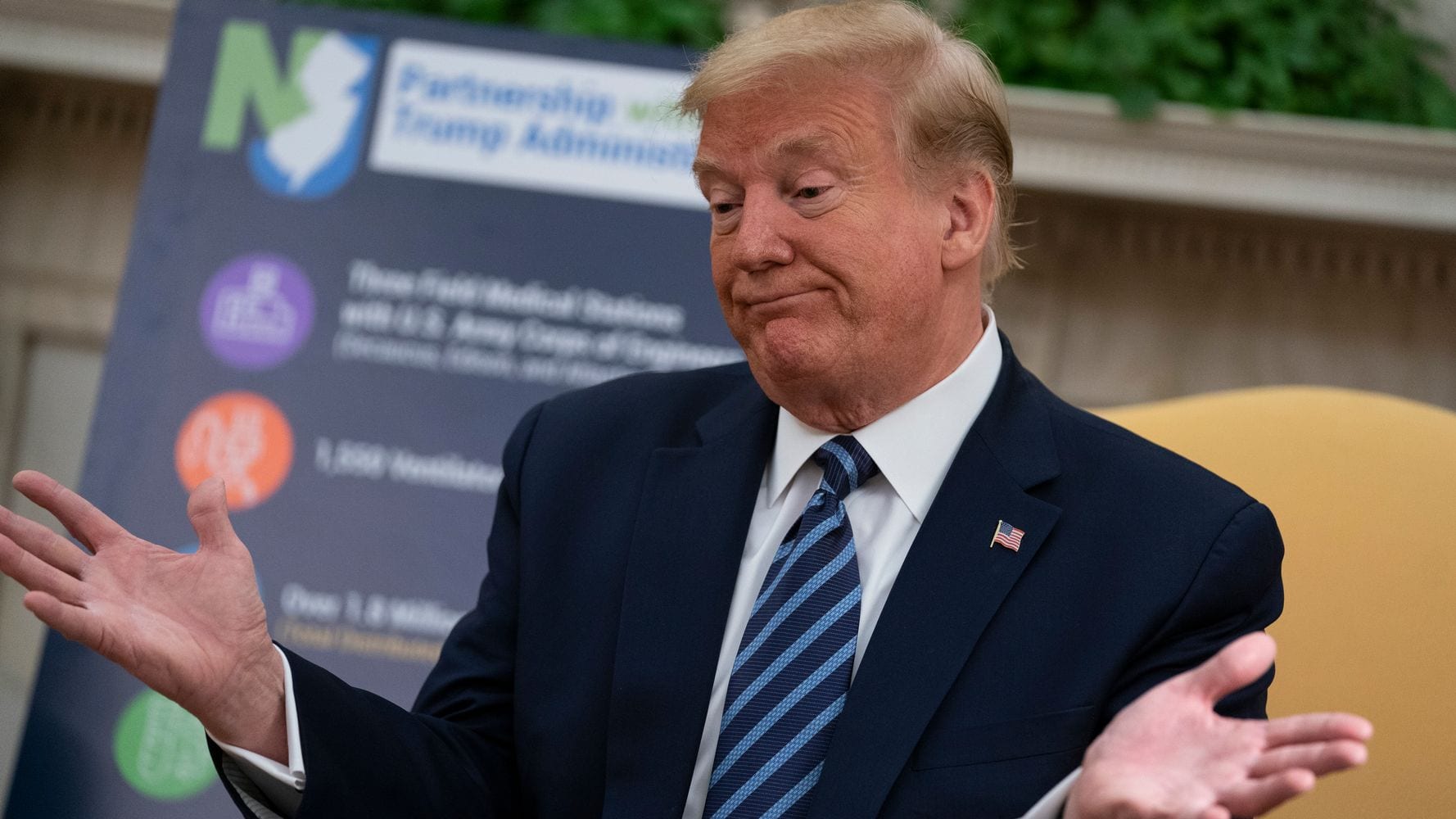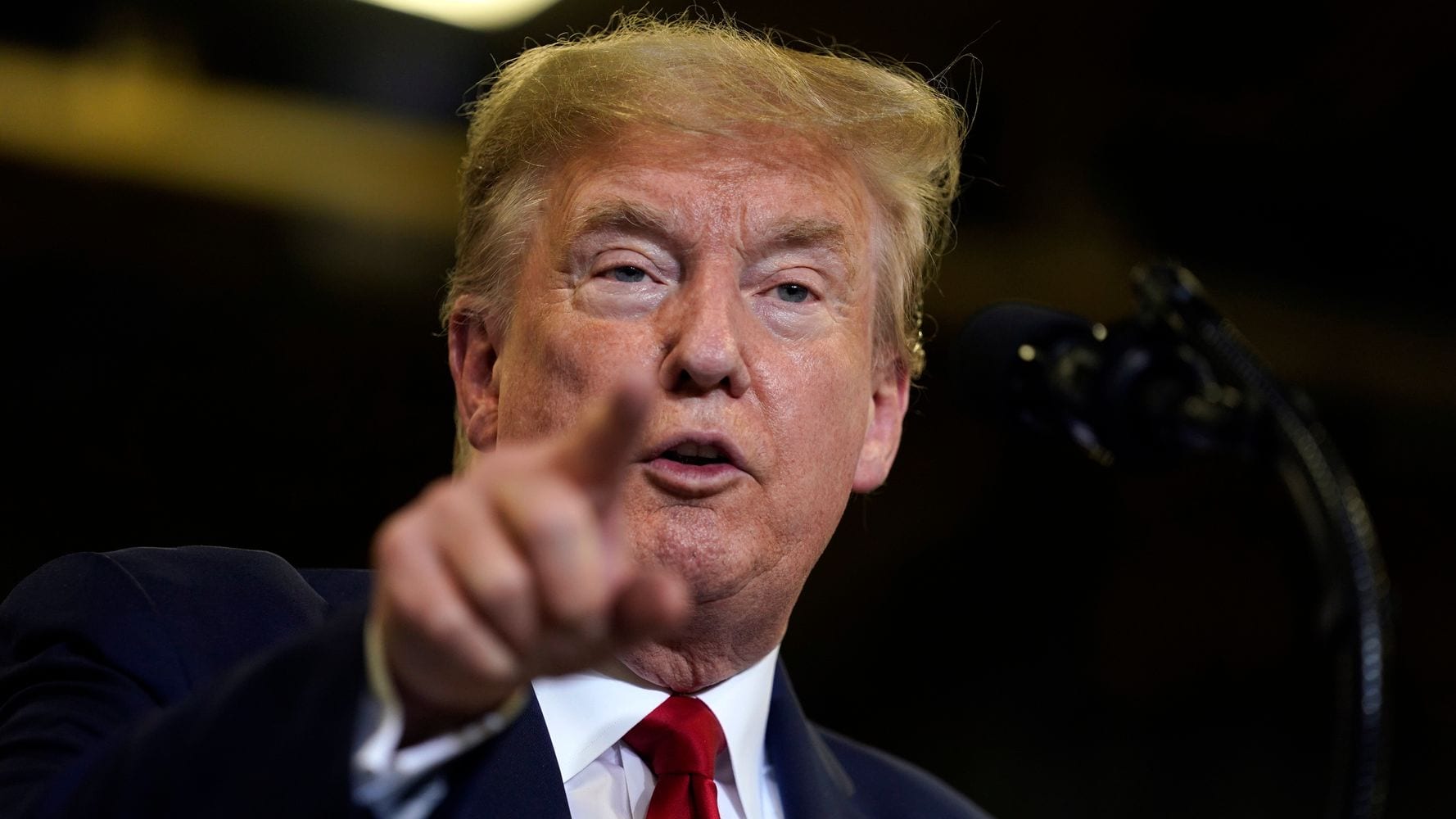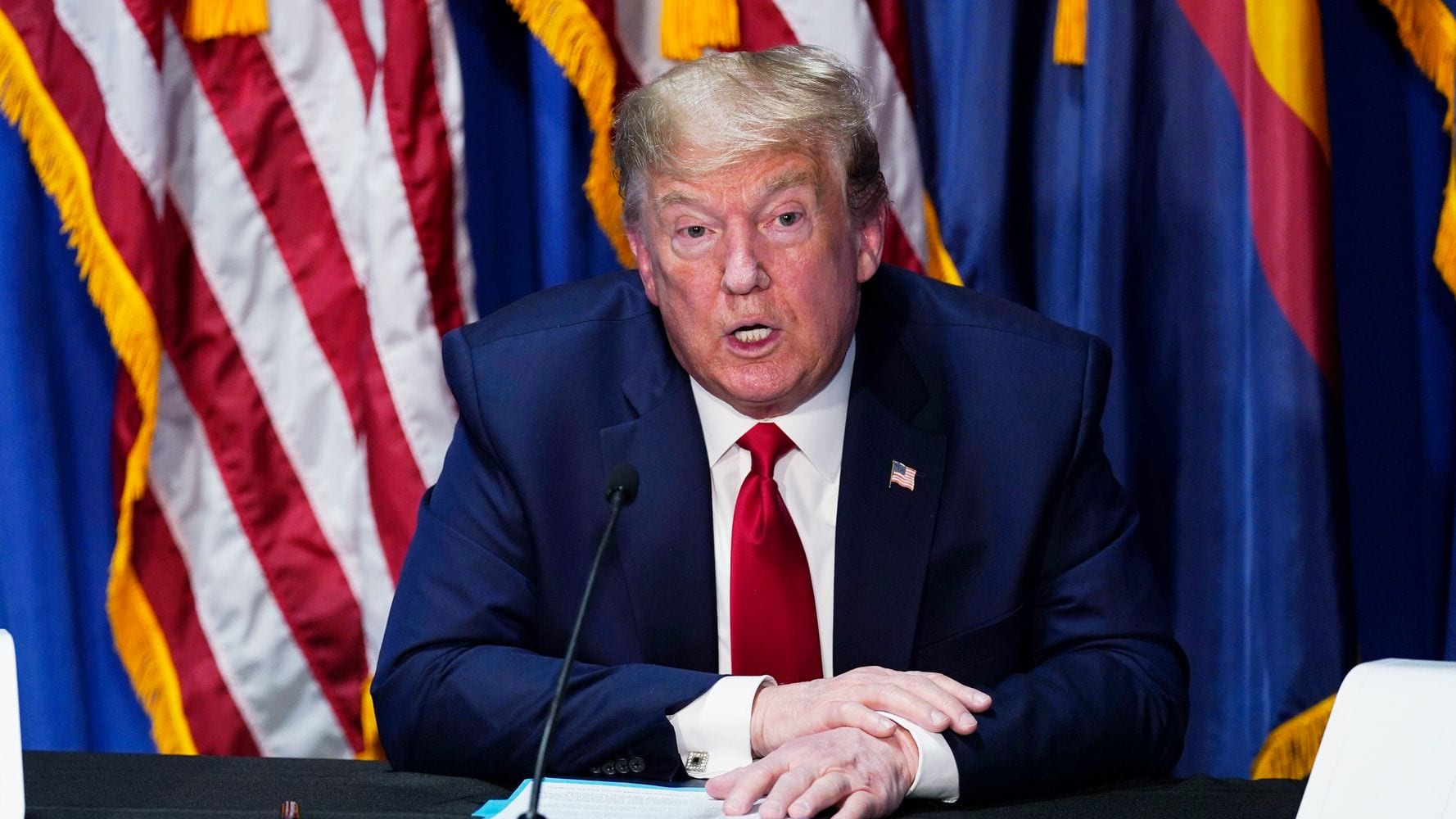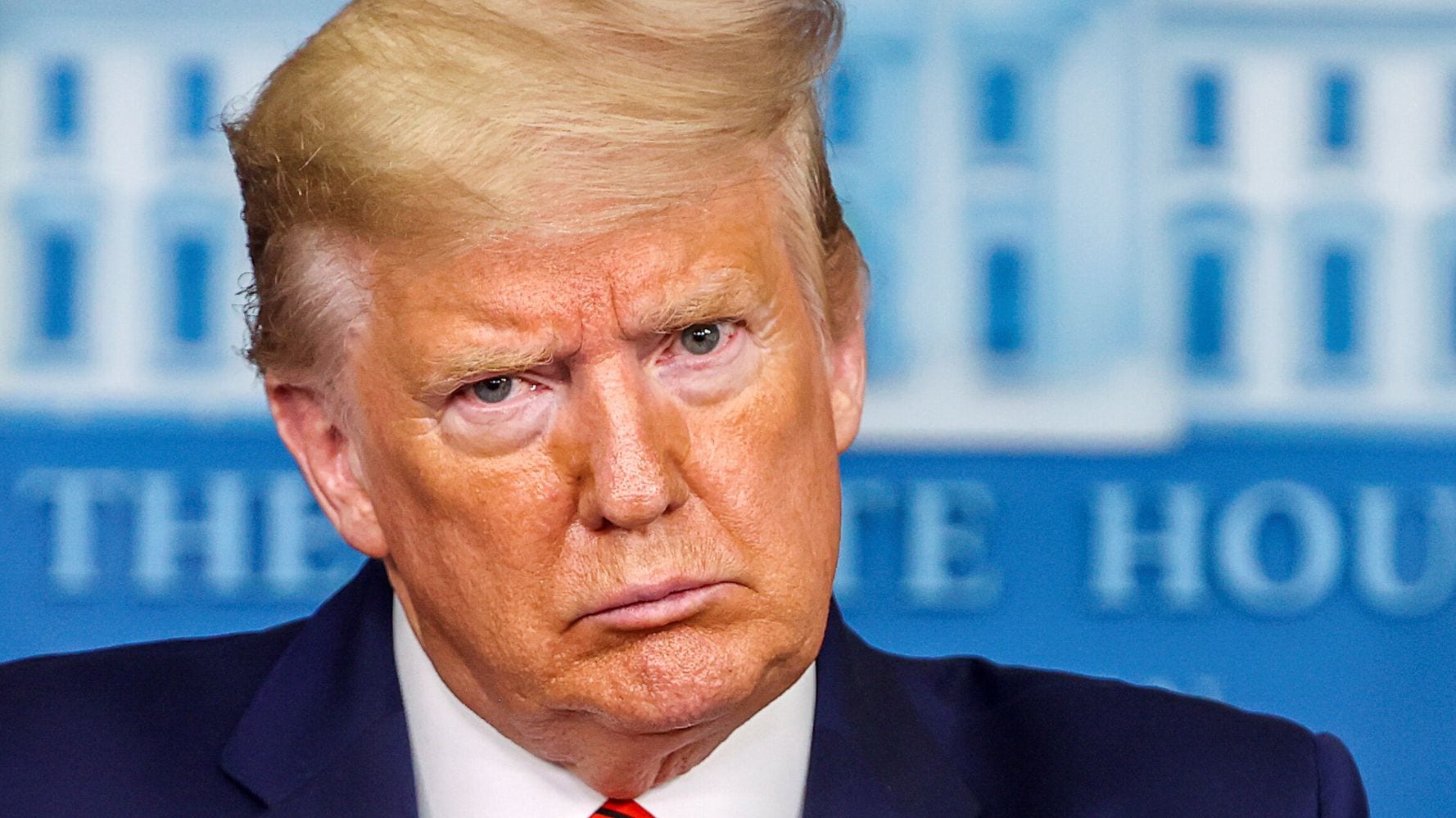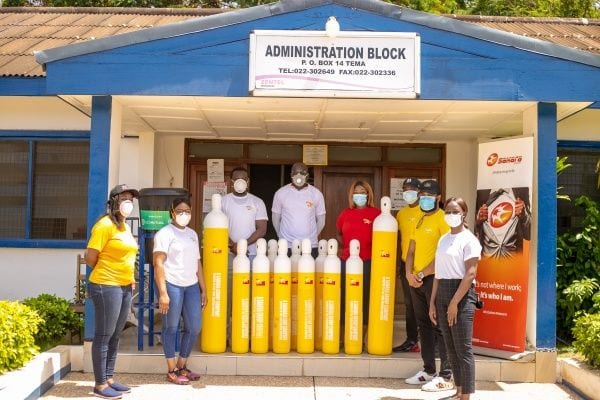[ad_1]
By Wednesday of this week, more than 1 million Americans had tested positive for COVID-19, the disease caused by the novel coronavirus, and nearly 60,000 had died ― more than the U.S. death toll during the 20-year Vietnam War. The number of people who applied for unemployment surpassed 26 million, and a resumption of normal activity was still months away for much of the country.
But in President Donald Trump’s alternate universe, all was well. During an appearance that morning with Trump’s allies at “Fox & Friends,” White House senior adviser Jared Kushner declared victory over the pandemic.
“The federal government rose to the challenge,” Kushner said on the White House lawn. “This is a great success story.”
The claim was as absurd as it was out of touch, the latest in the Trump administration’s weekslong effort to first downplay the pandemic and later deflect blame and weave a tale of revisionist history. Along the way, the president and his team have told a slew of lies and made sweeping promises that it has proven unable to keep.
Here’s a look at some of Trump’s biggest whoppers:
Maximum Of 60,000 Deaths
A month ago, as the pandemic swept the nation, Trump cited worst-case death toll projections in a clear attempt to set himself up for success. During a White House briefing March 29 in the Rose Garden, he referenced modeling that found there could be between 1.6 million and 2.2 million fatalities in the U.S. if no containment measures were taken.
“If we could hold that down, as we’re saying, to 100,000 — it’s a horrible number, maybe even less — but to 100,000, so we have between 100 and 200,000, we all together have done a very good job,” he said
Then last week, with the U.S. death toll at 42,000, Trump moved the target again, predicting a maximum of 60,000 Americans would fall victim to the disease and making clear he wants credit.
“We did the right thing, because if we didn’t do it you would have had a million people, a million and a half people, maybe 2 million people dead,” Trump said April 20. “Now, we’re going toward 50, I’m hearing, or 60,000 people.”
The U.S. death toll now stands at 63,019, according to data compiled by Johns Hopkins University. A model the White House often cites projects U.S. deaths from COVID-19 could top 74,000 by August.
As a sign of how much Trump has moved the goalposts, all of those ridiculous claims still pale in comparison to his assessment of the coronavirus outbreak two months ago.
“When you have 15 people, and the 15 within a couple of days is going to be down to close to zero, that’s a pretty good job we’ve done,” he said at a White House press conference Feb. 26. Zero is quite a bit lower than 60,000 or 2.2 million. That didn’t stop Trump from repeatedly restating his wildly false assertion that the virus would soon magically go away, most recently on Tuesday.
‘We’ve Tested More Than Every Country Combined.’
A shortage of COVID-19 tests has plagued the Trump administration’s response to the pandemic, ultimately costing the health care system precious time.
In early March, as stories of people being denied tests mounted, Trump declared that “anybody that needs a test gets a test.” Dr. Anthony Fauci, director of the National Institute of Allergy and Infectious Diseases and a member of the White House’s coronavirus task force, contradicted the president during a congressional hearing days later, describing the lack of available tests as an ongoing failure.
Trump also promised Americans that drive-through testing would be widespread at Walmart, CVS and other major retailers. “The goal is for individuals to be able to drive up and be swabbed without having to leave your car,” Trump said at a March 13 press conference.
He added that Google was “very quickly” developing a website for checking symptoms and locating testing sites. Verily, a subsidiary of Google’s parent Alphabet, poured cold water on Trump’s claim, issuing a statement that said the website was in “early development” and would be initially tested in the San Francisco Bay area “with the hope of expanding more broadly over time.”
Verily did launch a website, but screenings remain limited to people in select cities in nine states. Meanwhile, the retailers Trump mentioned during his March 13 address have been slow to get drive-through testing up and running. As of Monday, Walmart, Walgreens, CVS, Kroger, Rite Aid and Target were operating a total of approximately 100 testing sites around the country, CNBC reported. And companies have warned that the ability to ramp up testing is dependent on the availability of supplies and labs to process tests.
Without widespread testing, it is impossible to know how the virus is moving throughout the country and where to prioritize resources to slow the spread.
“We had a chance to contain this outbreak, but we didn’t,” Ashish Jha, director of the Harvard Global Health Institute, told ABC News. “And as a result of that testing failure, over 60,000 Americans are dead and our economy has been shut down. It didn’t have to be this way.”
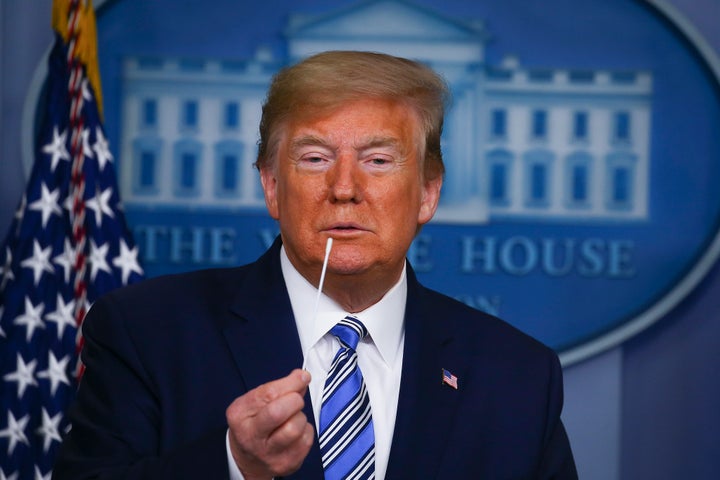
Trump continues to drastically overstate U.S. testing capabilities. Last week he said “we’ve tested more than every country combined” ― a claim that Politifact found to be “Pants on Fire” false ― and that the U.S. would “very soon” reach 5 million tests per day.
As has become the norm, Trump was quickly contradicted by his own health experts. “There is absolutely no way on Earth, on this planet or any other planet, that we can do 20 million tests a day, or even 5 million tests a day,” assistant health secretary Admiral Brett Giroir, who is in charge of the government’s COVID-19 testing response, told Time magazine.
The U.S. has conducted a total 6.2 million COVID-19 tests, with an average 171,000 new tests per day during the month of April, according to The Atlantic’s COVID Tracking Project. While Trump likes to point out that the U.S. has conducted more total tests than any other country, we lag behind several countries in terms of testing per capita ― a far more important benchmark.
There’s Plenty Of PPE For Health Care Workers
Doctors, nurses and other health care personnel around the country are desperate for vital supplies like N95 masks, gloves, gowns and face shields to protect them from contracting the coronavirus from COVID-19 patients.
There aren’t shortages everywhere, but there are shortages. In hard-hit locations like New York, health care workers have resorted to wearing trash bags or Yankees rain ponchos as gowns. In many places, doctors, nurses and other workers have to reuse masks that are supposed to be thrown away after a single use. In others, personnel are forced to use substandard equipment, like surgical masks that provide little protection compared to N95 masks. Health care workers are even staging GoFundMe campaigns to buy the supplies their employers aren’t providing. Some medical personnel have even been fired for speaking out against unsafe working conditions.
You wouldn’t know that from Trump. “We have masks. We have everything,” he said at a news conference April 10. Pressed by a reporter about widespread accounts from health care workers of personal protective equipment shortages, Trump declared them to be “fake news.”
There are a lot of dead doctors and nurses that show otherwise.
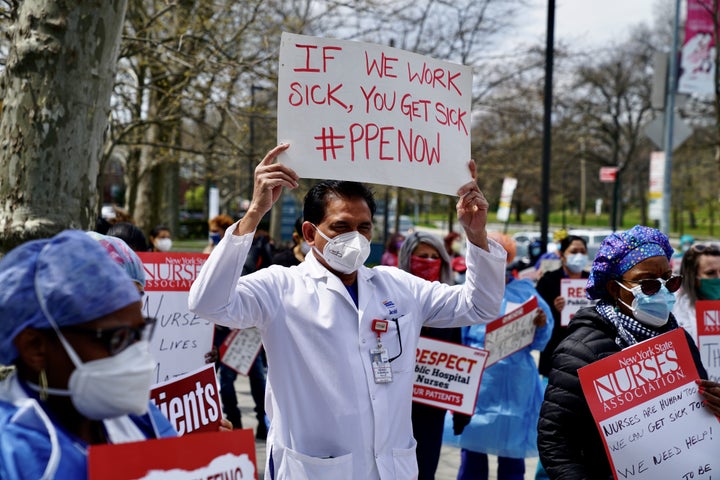
A Coronavirus Vaccine Is ‘Very Close’
A vaccine to immunize people against the coronavirus is the best hope for a long-term solution to the pandemic. But at this point, it’s still just a hope. Not that you’d know that if you listened to Trump.
“We’re very close to a vaccine,” Trump said on Feb. 25. Two days later, he repeated this patently false claim. “We’re rapidly developing a vaccine,” Trump said on Feb. 26. “The vaccine is coming along well.”
Sure, scientists around the world started working on vaccines as soon as possible. But vaccine development doesn’t happen “rapidly” like in the movies, no matter how much Trump yells at the virus. Vaccines typically take years to develop and test and there’s always a chance that one is never developed. Scientists have been researching vaccines for many diseases, including HIV/AIDS, for decades without success.
As has often been the case in the last few months, it was up to Fauci to dispel the president’s nonsense. A vaccine, he said after Trump’s remarks on Feb, 27, would take at least 18 months.
On Thursday, Fauci offered a somewhat more optimistic assessment of the progress of developing a coronavirus vaccine: Immunizations could be available as soon as January. Eleven months actually would be a fast deployment for a vaccine preventing a virus that was only discovered last winter, but it wouldn’t meet most people’s common-sense understanding of the word “rapidly.” And there’s still no guarantee that a safe and effective coronavirus vaccine will ever be available.
In fact, we’ve never successfully created a vaccine for other coronaviruses.
A HuffPost Guide To Coronavirus
Calling all HuffPost superfans!
Sign up for membership to become a founding member and help shape HuffPost’s next chapter


